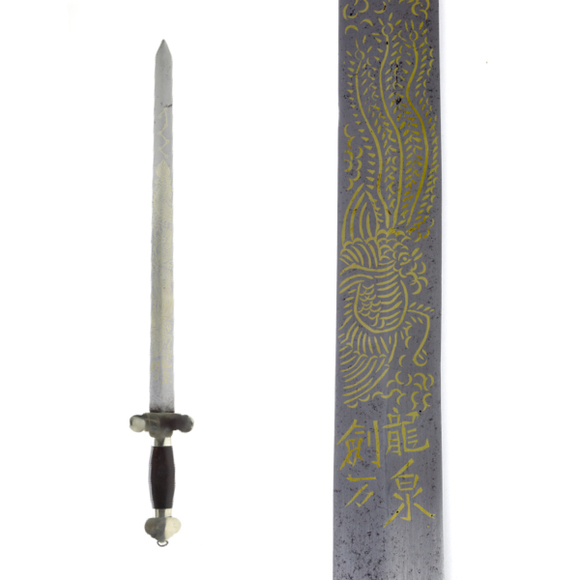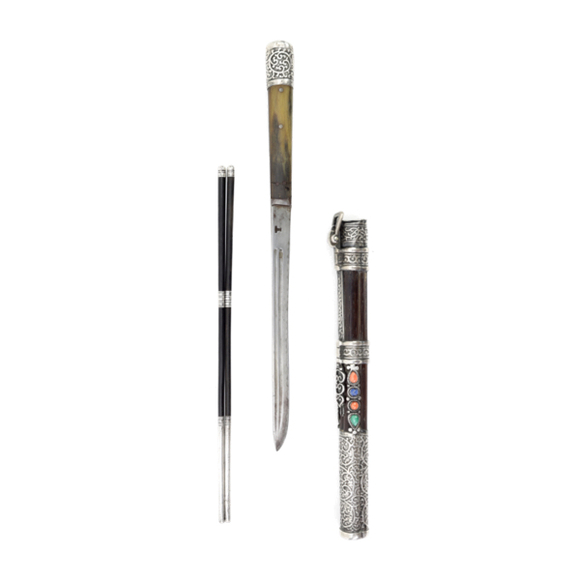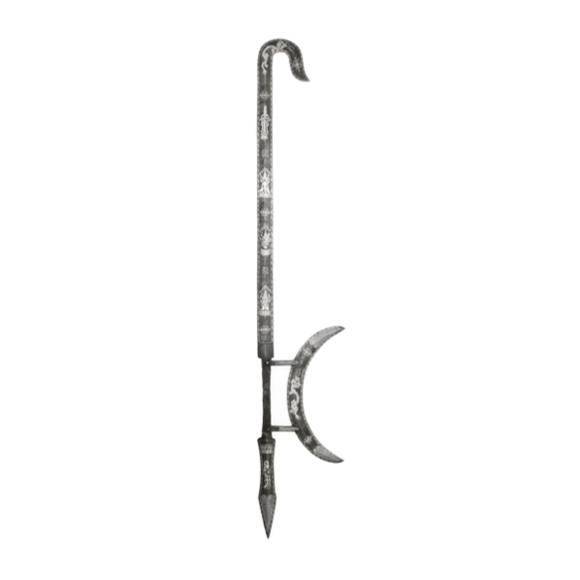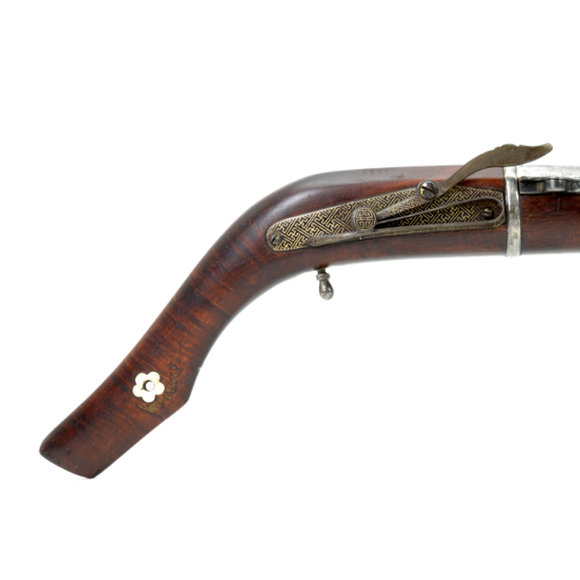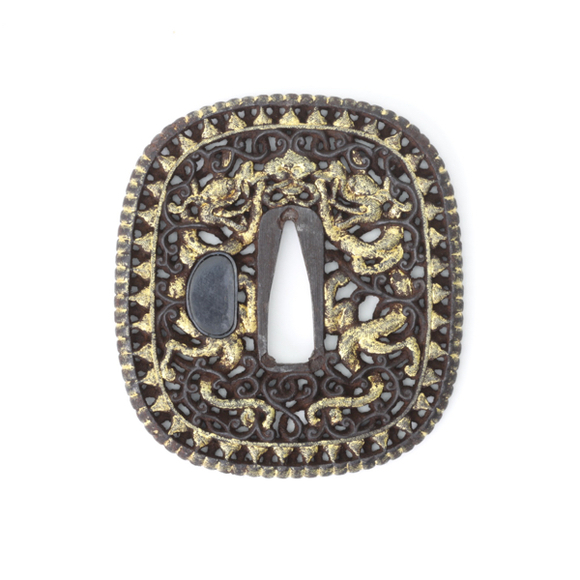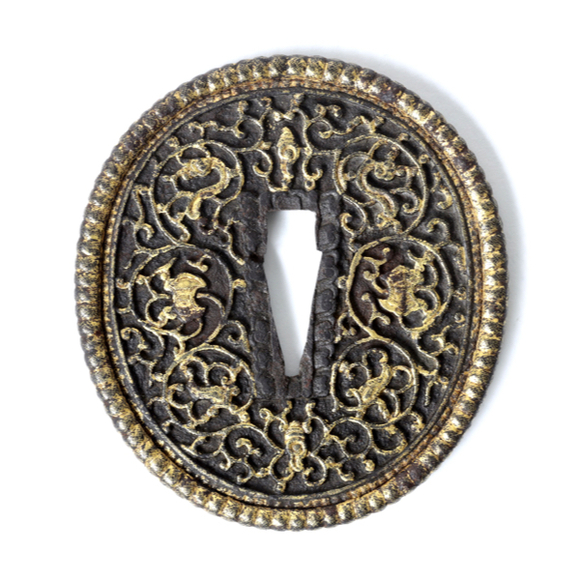Language: Mandarin Chinese
Origin: Collector's jargon. Probably a neologism.
Description
The niúwěidāo (牛尾刀) or "oxtail saber" is a late form of Chinese saber that was developed in civilian circles in northern China around the mid. nineteenth century. Its introduction came at a time when firearms had made armor largely obsolete.
It's characteristic blade flattens and widens considerably near the center of percussion, creating a relatively thin edge on a sweeping arc; perfect for deep cuts against soft, unarmored targets. This specialized design made the niúwěidāo immensely popular among rebels and their enemies in the social unrest that lead to the fall of the Qing, and the chaos that ensued in the Warlord Period of the early 20th century.
By the end of the last century, floppy martial arts swords of the same profile featured prominently in martial arts practice and movies, settling the niúwěidāo in the minds of many as the archetypical Chinese saber.
 A typical oxtail saber. This particular piece carries a marking stating it was made in the 20th year of Guangxu, corresponding to 1895.
A typical oxtail saber. This particular piece carries a marking stating it was made in the 20th year of Guangxu, corresponding to 1895.
Sold by Mandarin Mansion in 2019.
Origin of the term
Although widely used among martial artists and sword collectors today, I have not been able to find the term niúwěidāo in period sources. It is, for example, absent in Jin Yiming's "Single Defense Saber" manual of 1932, even though the saber used is clearly a niúwěidāo. Jin Yiming uses the more generic term yāodāo (腰刀) in this text which is an umbrella term to describe any waist-worn single-handed dāo regardless of blade type.
Niúwěidāo is therefore quite possibly a neologism that originated after Jin Yiming's publication.
Notes
1. "Single Defense Saber" (單戒刀) by Jin Yiming (金一明). Published by 新亞書店印行, New Asia Press, Oct, 1932. (A very nice English translation is available here.)

